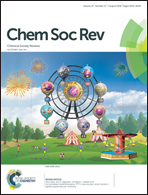Harnessing the properties of colloidal quantum dots in luminescent solar concentrators
Abstract
Luminescent solar concentrators (LSCs) can serve as large-area sunlight collectors, are suitable for applications in high-efficiency and cost-effective photovoltaics (PVs), and provide adaptability to the needs of architects for building-integrated PVs, which makes them an attractive option for transforming buildings into transparent or non-transparent electricity generators. Compared with traditional organic dyes, colloidal semiconducting quantum dots (QDs) are excellent candidates as emitters for LSCs because they exhibit wide size/shape/composition-tunable absorption spectra ranging from ultraviolet to near infrared, significantly overlapping with the solar spectrum. They also feature narrow emission spectra, high photoluminescence quantum yields, high absorption coefficients, solution processability and good photostability. Most importantly, QDs can be engineered to provide a minimal overlap between absorption and emission spectra, which is key to the realization of large-area LSCs with largely suppressed reabsorption energy losses. In this review article, we will first present and discuss the working principle of LSCs, the synthesis of colloidal QDs using wet-chemistry approaches, the optical properties of QDs, their band alignment and the intrinsic relationship between the band energy structure and optical properties of QDs. We focus on emerging architectures, such as core/shell QDs. We then highlight recent progress in QD-based LSCs and their anticipated applications. We conclude this review article with the major challenges and perspectives of LSCs in future commercial technologies.



 Please wait while we load your content...
Please wait while we load your content...